Many families keep kumquat trees after Tet to beautify their homes and save costs. However, by summer, the kumquat trees tend to lose all their fruits. To learn how to care for kumquat trees after Tet and ensure their survival and fruit-bearing capacity for the next Tet holiday, read on!
1 How to Care for Kumquat Trees During Tet
Caring for kumquat trees during Tet is simple. Just use a small spray bottle with a capacity of 0.5-1.5 liters to spray the tree, or use your hands to sprinkle clean water on the leaves once or twice. Additionally, keep the soil around the roots moist to maintain the freshness of the leaves and minimize fruit drop after Tet.
 Keep the soil around the roots moist
Keep the soil around the roots moist
2 How to Plant and Care for Kumquat Trees After Tet
Prepare the Soil for Planting
Prepare loose, airy, and moist soil that is rich in nutrients and has a pH level of 5-6 to provide the best conditions for the tree’s growth. Avoid waterlogged areas to prevent root rot.
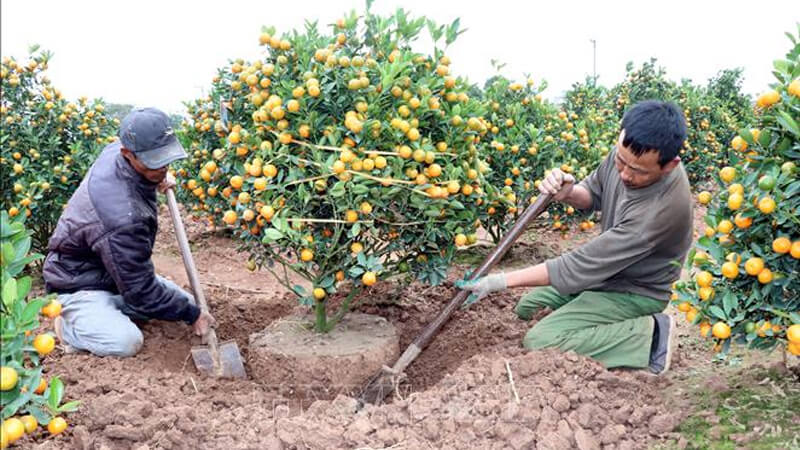 Prepare the soil for planting
Prepare the soil for planting
Provide Nutrients to the Tree
To care for kumquat trees in pots after Tet, 5-7 days after planting, loosen the soil around the base of the tree, about 20-30cm from the trunk. Then, provide nutrients to the tree by mixing fertilizer with water and pouring it around the base, or by applying fertilizer directly to the soil. Use NPK(12:5:10) fertilizer, well-rotted manure, or PTS9 organic micronutrient fertilizer. The amount of fertilizer applied depends on the size of the tree.
 Provide nutrients to the tree
Provide nutrients to the tree
Prune and Shape the Tree
Prune the tree to give it a neat appearance. If you want to change the shape of the tree, let it grow until it is lush and green, and then cut and shape it as desired. When pruning or shaping the tree, use specialized tools to avoid damaging the branches. Pruning should be done on dry, sunny days.
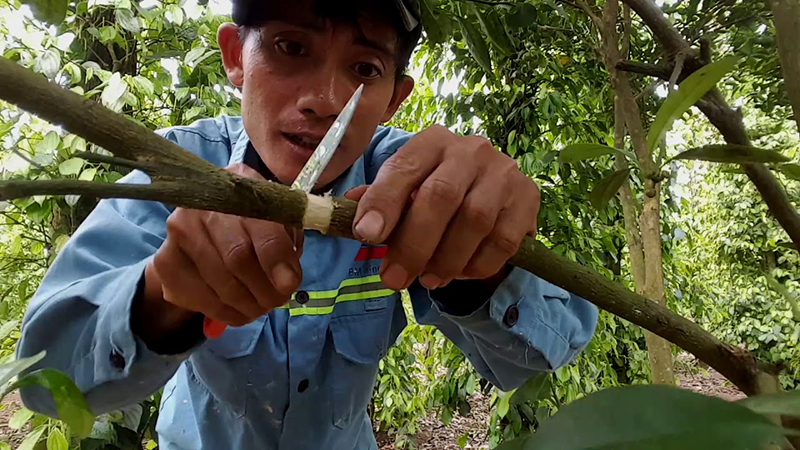 Prune and shape the tree
Prune and shape the tree
Prevent Pests and Diseases
When watering the tree daily, inspect the entire tree for signs of pests or diseases and take appropriate action. Instead of using pesticides, which can be harmful to your health, use gardening tools to remove insects.
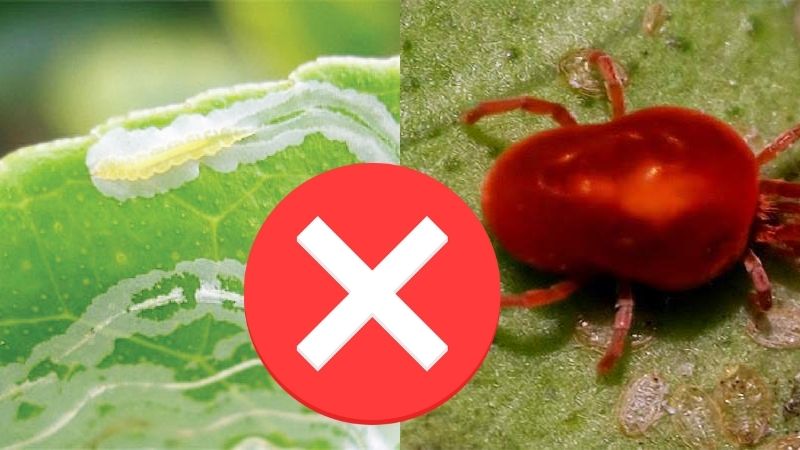 Prevent pests and diseases
Prevent pests and diseases
Repot the Kumquat Tree
Before repotting the kumquat tree, water the soil around the roots generously. Use an iron or wooden tamper to compact the soil around the base of the tree (20-30cm away from the trunk) to prevent the soil from breaking apart when repotting.
The size of the new pot depends on the size of the tree and its canopy diameter. Dig a hole 60-100cm away from the base, with a depth of 40cm and a width of 20cm. Then, trim the roots to fit the new pot, removing any large roots (diameter > 1cm) that cannot be wrapped around the root ball. Keep the smaller, softer roots and wrap them around the root ball, securing them with nylon string.
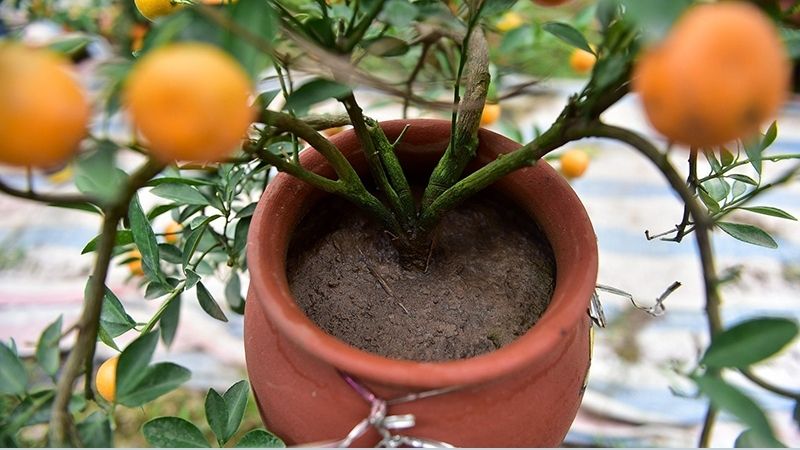 Repot the kumquat tree
Repot the kumquat tree
Encourage Flowering and Fruiting
After repotting, place the tree in a shady area for 5-7 days, remove half of the leaves, and then care for it as usual. If the tree flowers in July-August, remove some of the fruits, leaves, and flowers.
In September and October, apply nitrogen and potassium fertilizer to promote growth and encourage flowering in November, with fruits ripening in time for Tet (January-February) of the following year.
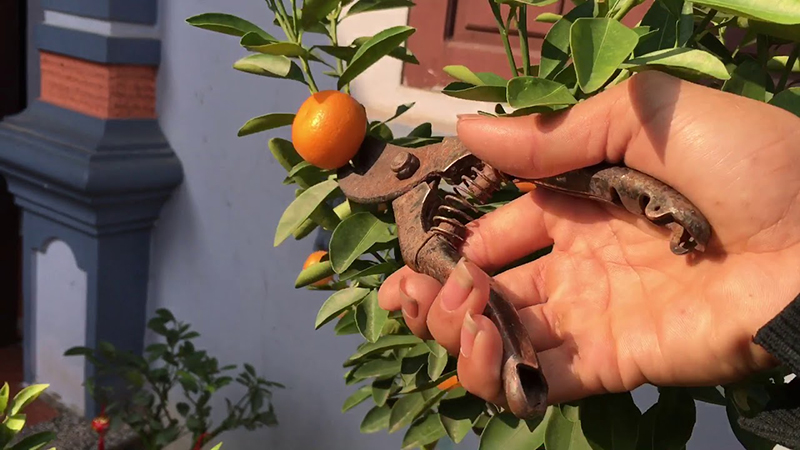 Encourage flowering and fruiting
Encourage flowering and fruiting
: In Chinese pronunciation, the word for kumquat sounds similar to the word for “good luck.” Therefore, kumquat trees are often chosen as decorations during Tet. A healthy kumquat tree with lush green leaves and golden fruits symbolizes prosperity and abundance, promising a fruitful and prosperous new year. Additionally, a tree with ripe, unripe, and young fruits represents completeness, success, and good fortune in love.
Notes on Planting Kumquat Trees After Tet
The first step to reusing kumquat trees after Tet is to ensure their health. If your tree has a beautiful shape, is pest-free, and has lush leaves, you can definitely care for it to thrive again.
Maintain moisture by using a spray bottle to mist the tree and soil daily or by sprinkling water on the leaves. When watering, do so gently at the base of the tree to avoid soil compaction.
These practices help the tree retain its leaf and fruit during Tet, making it possible to reuse the tree afterward.
If you plan to replant the tree and there are still fruits on it, remove all the fruits and prune about half of the leaves to reduce the tree’s nutritional and water requirements while the roots establish themselves in the new environment.
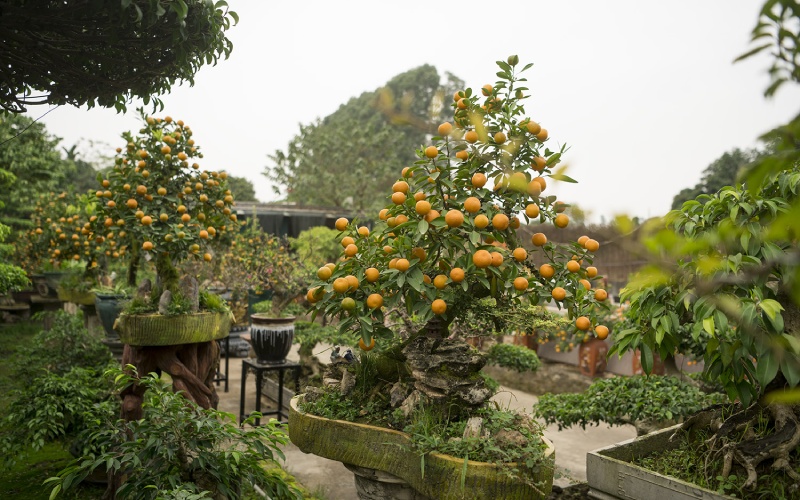 Notes on planting kumquat trees after Tet
Notes on planting kumquat trees after Tet
3 Frequently Asked Questions About Planting and Caring for Kumquat Trees After Tet
What should I do before replanting kumquat trees?
First, use a rooting product to spray the leaves and roots. After 10 days, new roots will form. Remove half to two-thirds of the leaves, then replant and water the tree. Ensure the soil is moist, airy, and has a pH of 5-6. Apply 1-2 kg of biofertilizer or 3-5 kg of well-rotted manure to the planting hole.
How can I have both green and ripe fruits on my kumquat tree?
About 5-7 days after planting, loosen the soil about 30cm from the trunk to keep it airy. Apply 0.5-1kg of NPK fertilizer to each corner of the pot, or use PTS9 organic fertilizer as a substitute for manure. Additionally, spray growth promoters (every 15-20 days) to encourage the tree to bear both green and ripe fruits.
How often should I prune my kumquat tree after Tet?
Prune the tree every 10-15 days to maintain its shape and encourage new growth. Pruning also allows more sunlight to reach the tree, focusing its energy on producing more leaves, flowers, and fruits for the next Tet holiday.
 Frequently asked questions about planting and caring for kumquat trees after Tet
Frequently asked questions about planting and caring for kumquat trees after Tet
For further reference: Guide to
With the above information, you now know how to plant kumquat trees after Tet to enjoy them for the next Spring. It’s simple, effective, and cost-saving! Good luck with your kumquat tree planting journey!





































